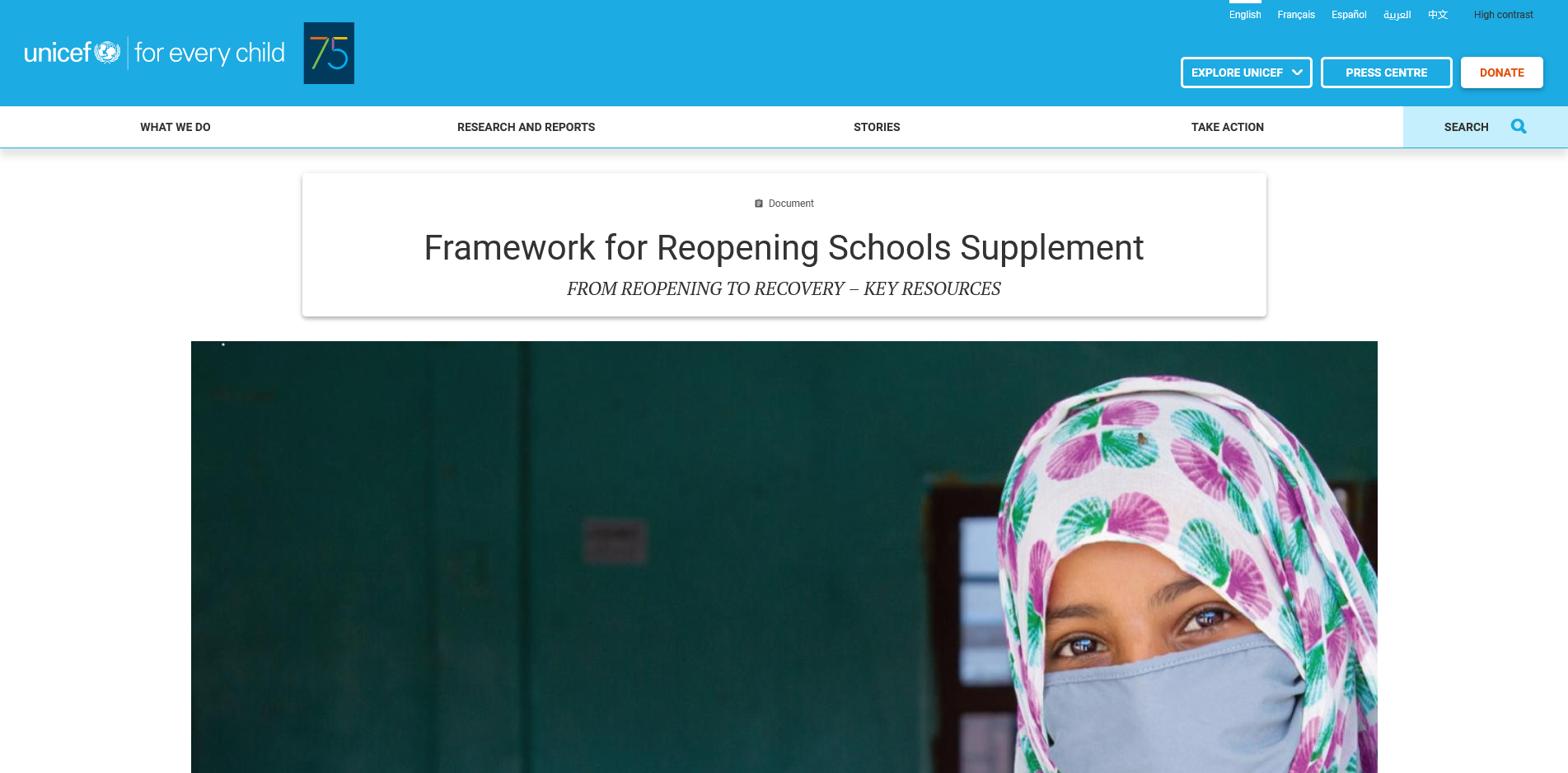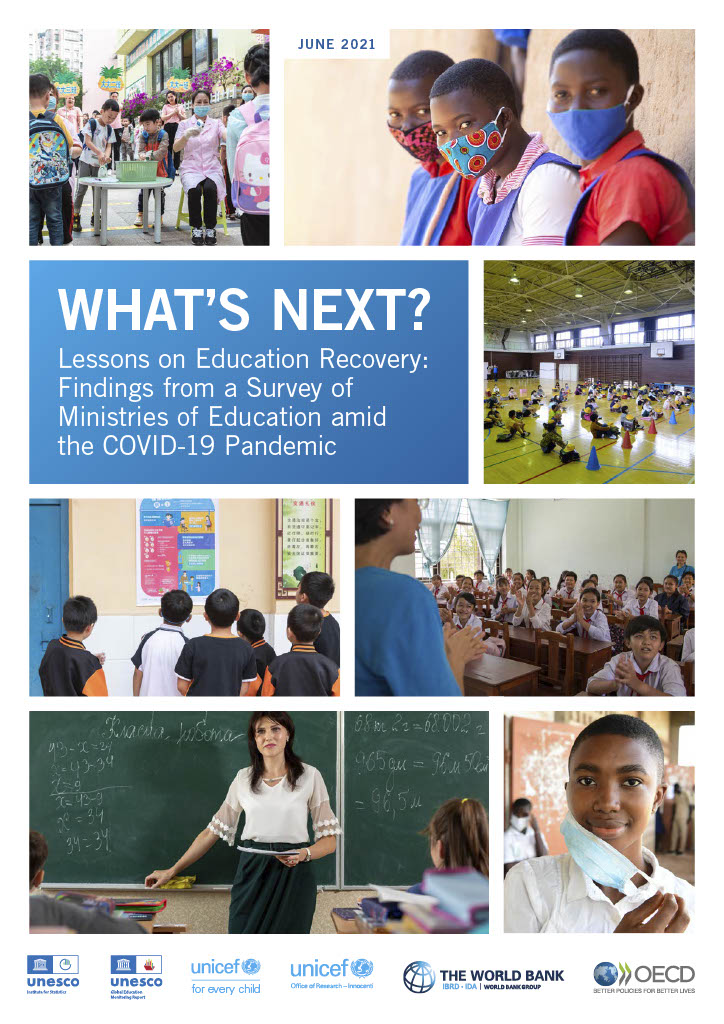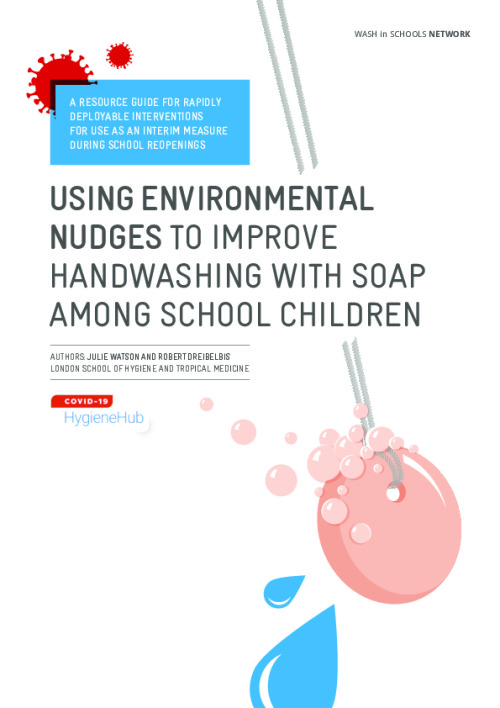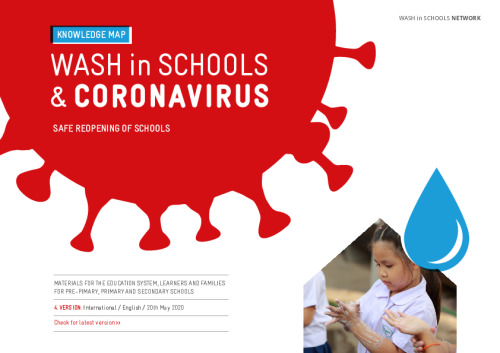
Framework for reopening schools supplement: From reopening to recovery – key resources
As we enter the second year of the COVID-19 pandemic, the global education community is vocal on the need to ensure that no effort is spared to keep schools open or prioritize them in reopening plans. Lost schooling is now measured in months instead of days.
As we enter the second year of the COVID-19 pandemic, the global education community is vocal on the need to ensure that no effort is spared to keep schools open or prioritize them in reopening plans. Lost schooling is now measured in months instead of days. The cost of closing schools – which at the peak of pandemic lockdowns affected 90 per cent of students worldwide and left more than a third of schoolchildren with no access to remote education – has been devastating. The number of out of-school children and youth is set to increase by 24 million, to a level we have not seen in many of our lifetimes and reversing hard-won gains in the right to education.
Children’s ability to read, write and do basic math has suffered, as has the development of their skills to reach their future potential. There is emerging evidence not only of learning being stalled, but also regression in basic skills acquisition. An additional 72 million primary school-age children will be pushed into learning poverty and lifetime earnings of this generation reduced by the equivalent of nearly 10% of global GDP. Many studies have produced grave findings that children’s health, development, safety and wellbeing are at risk. The most vulnerable boys and girls, as always, are bearing the brunt of these impacts, amplifying a pre-existing learning crisis.
COVID-19 depriving 370 million children from school meals and children’s nutrition is worsening. Without the safety net that school often provides, children especially girls are more vulnerable to abuse, child marriage and child labour, particularly as the economic impact of the pandemic worsens. Without daily interactions with their peers and a reduction in mobility, they are losing physical fitness and showing signs of mental distress. Without the safety net that school often provides, they are more vulnerable to abuse, child marriage and child labour. Although most countries have made significant efforts to put remote learning strategies in place, the quality and effectiveness are varied, and equity issues with regards to access to digital learning have been brought to the forefront.



